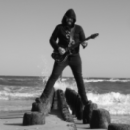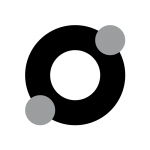Leaderboard
Popular Content
Showing content with the highest reputation since 04/16/2024 in all areas
-
Wow, lots of really good comments here. Thanks. Just following up. So it sounds like there may have been slight differences and it was ALL in my head..... however, the bottom line is I am very very happy with what I have now. I absolutely love it. Just for background if anyone is interested, I play mainly my tele and can go from very clean to dirty clean to crunchy to more hairy overdrive (not metal but more warm bluesy full overdriven state). I used to use the Zed amp as a base and then have 3 stomps (one to up the amp drive and adjust volume, the Minataur(sp?), and either the Temo or the Compul drive. with the latest update, I started using the Clarity as a starting point. It is really clean and has a ton of headroom and stays clean. I then use combinations of stacking the Prize Drive, the Teemah! and the Horizon Drive to get the different levels of overdrive I need. it is great! at least for me! I also use snapshots to switch between modulation effects: Chorus, Trem, 145 Rotary, Script Mod Phase, and no modulation. I have those 5 snaps assigned to one footswitch so I can roll through each of those and turn on the one I need. I also have a snapshot that I use for spacey sounds which turns on the chorus, delay, and another reverb. I used the command center to assign that to a foot switch that rotated between the spacy and the clean. Unchecking the snapshot option on the drives and amp lets me keep my tone the same no matter the other snapshots. I am sure there are improvements, but this works great for me now and gives me a ton of options. Clar PzTH DD C .hlx2 points
-
You realize that this is an 8-year-old thread and the person you're replying to hasn't been back in 7 years? I'm thinking their problem was solved, and they never got around to reporting back. FWIW - after they replaced some boards on mine 6 years ago, the digital I/O (AES and SPDIF) have worked fine. I see you're a new member so WELCOME and BEWARE of ZOMBIE THREADS! They'll eat your brain! ;-)2 points
-
The 8i6 has S/PDIF. Assuming that when you say Heilx you mean the FLOOR model, not the LT, this is how I do it with my 18i20. NOTE - the 18i20 uses different USB #s - 9/10 (7/8 on the 8i6); 11/12 (5/6 on the 8i6): With the 8i6 set as the ASIO Device in your DAW. Guitar>Helix>Helix FX (OD/MODS etc)>Path 1 Output Block=DIGITAL Helix SPDIF OUT>8i6 SPDIF INPUT DAW Track Input USB 7/8 (SPDIF)>Plugins>DAW Track Output 5/6 (SPDIF) 8i6 SPDIF Output>Helix SPDIF IN>Helix Path 2 Input=DIGITAL>Helix FX (Delay/Reverb etc)>Path 2 Output Block Helix MAIN Outs In Focusrite Control you want the SPDIF Outputs (not MUTED) set to "SOFTWARE (DAW) PLAYBACK 5/6". All other Inputs MUTED. Whichever 8i6 Outputs your speakers are connected to should be set to whichever 8i6 Inputs your Helix MAIN Outs are connected to. In my case I connect the Helix XLRs to the 18i20 Inputs 1/2 from where I can use Focusrite Control to route to the 8i6 Outputs 1/2 (Studio Monitors). 3/4 (Powercab), 5/6 (FRFR112). This configuration provides minimal latency as the signal chain is DIGITAL from Helix to Scarlett to DAW to Scarlett to Helix with the only AD/DA conversions at the Helix Input and Output - the path from the Helix Main Outs through the Scarlett to the speakers is analog. To RECORD the final Helix Output setup another track to take its INPUT from whichever 8i6 Inputs the Helix Main Outs are connected to - in my case Inputs 1/2. If you have an LT you can still do this, but unless you use the LT as your ASIO Device you'll be adding conversions.2 points
-
1 point
-
Anytime! Always happy to share what I've figured out or learned from others. Just remember to keep it simple. Get your foundation amp tone and volume settled and move on from there. As I said, think about where you want to go. And remember as well, a button in stomp mode can be so much more than an on/off control. Well.....when you get to that point.1 point
-
1 point
-
It all depends on the song. Most of the time I stick with one amp/cab and dial amp gain up and down....along with my guitar volume controls (or the volume pedal on the Go). Same with effects and settings. However, there are certain songs that I need a spanky clean tone for ("Float On" by Modest Mouse for example) so that gets it own patch. Acoustic songs also have their own patches and such. Three patches in stomp mode cover everything that I need. However, if I were in a Pink Floyd tribute band, I would probably create a bank of patches for each album with each patch being setup a bit different per song. So it really comes down to how you want to use the Go. There was a great thread over on The Gear Page forum discussing how to approach all modelers. Basically, it comes down to determining where you want to go. Say you want a Metallica sound. Well, a Vox amp won't really get you there. It can with some help....but why try when you grab a Mesa with a Mesa cab (or JCM800 with Marshall cab if you want the earlier sounds)? As with any rig, figure out your foundation and then work from there. And remember, just because you have access to all of the effects doesn't mean you need any of them.1 point
-
All different mics and their positions change the tone and the volume of the signal. You can adjust the volume of the amp/cab blocks to level off your sound. But most importantly, once you figure out your main sound, just leave it alone. I do not recommend changing amps/microphones between your presets. Otherwise there will always be volume/tone discrepancies that you can only really discover if you do a sound check at the venue you are going to be playing at. I have picked all the ingredients of my sound and they are the same in every preset / song that I play, always.1 point
-
Dial in your sound and leave it alone. Simple. Otherwise, there's no end to the amount of things you can tweak. Options paralysis.1 point
-
If you use an audio interface to use Helix Native, it can theoretically color your sound / add drive / remove drive. In addition to the output levels mentioned above.1 point
-
Here is how you can test for defective MAIN INs on the unit: Plug into input R and listen if it is still dull (add a +3dB gain block if you want to match the level of input L). If it is not dull but input L is then it's defective. If both are dull: Set Global Settings -> INs/OUTs -> Send/Return to Inst and Return Type to Return. Set the input block to Input Return L/R by turning the lower knob clockwise one step. Plug your guitar into Return L and test for dullness. If it is not dull but Inputs L/R are (and Input Z is at 1MOhm) both Inputs are defective. Report back.1 point
-
I'm a recent convert to the POD Go and, despite trying over the years, i stayed away from modelers and deep menus. However, after a few rehearsals and gigs with the POD Go, I'm quite comfortable with it. Like you, initially I found myself micromanaging and tweaking too much. I ended up trying some free patches....and then bought some packs (as well as some IRs). This made things much easier. Start with an amp/cab combo that matches what you are looking for. Dial it in like a real amp. Add effects and tweak the settings....just like a real pedal. Ignore the global high/low shelves....heck, ignore them on most patches as well. By doing this I quickly created the right patches for myself and my band. The factory presets aren't very good IMO and makes starting off a bit difficult. Something I found by using other peoples patches is that you discover options that you wouldn't know existed. For example, say you operate in stomp mode for your distorted rhythm tone and want a boost for a lead tone. You put a boost in a pre amp block and dial it in to taste....but it's still not working for you. Well, the button that you assigned to the boost can be used for much more than turning the boost off and on. You can assign it to any other option as well. For example, you might want to change the IR in the cab block, increase the amp channel gain, and boost the mids. Easy! Set the min/max on those parameters and assign the boost button to all of them. One button push, 8 parameters changed at once! That was a cool one to discover and keeps you from having to do the pedal dance (which I am not a fan of). Again, it's a function that I would not have known of unless I downloaded prebuilt patches.....or stumbled upon a video or forum discussion.1 point
-
I use two outputs, one goes through a cab block to FOH and IEMs, the other no cab block into Powercab 112+ or 212 (depending on the gig) always in Flat/RAW. I find I really like the sound of the Eminence speaker. So I treat Powercab as a 1x12 or 2x12 powered guitar speaker in a closed back cabinet. I don't try to make it sound like something it isn't. That's speaker configuration works well for me in a gigging situation. Powercab is a really great platform for use with any modeler. I find it convenient, reliable, easy to use, very flexible, and sounds great. It's perhaps not the best FRFR since the speaker is a guitar speaker, not HI-Fi, and the tweeter is coaxial which limits the high frequency dispersion a bit. I wouldn't use it for bass for example. It could probably be used for keys, but might not be that great.1 point
-
1 point
-
Have you explored the Customtone site (see top of this page)? Filtering for the Catalyst amp series I see 121 presets/tones available for download. Perhaps some of them will provide at least a starting point for further tweaking.1 point
-
I appreciate the time you put into uploading a clip. The clip made me more convinced that there is no or negligible audible difference between said firmware versions.1 point
-
Fractal...;) Sorry, couldn't help myself, lol. Sadly I'm not the one to ask, but someone will likely chime in. Be prepared for IT- themed questions like what OS you're running, etc etc.1 point
-
1 point
-
No...I said that I liked the sound of the sample video. That was not the sound I was getting from my amp. Not even close. I contacted tech support and was able to reload that preset. Now it works perfectly. I think that preset must have been corrupted during the update process...Or something. Thanks again for great tech support from Line 6!1 point
-
If there is such a setting it doesn’t seem to be documented. Which means there likely isn’t.1 point
-
He’s using the POD Express, not POD Go. It does not have the Clarion model (at least not yet?).1 point
-
If you set Global Settings->MIDI/Tempo->MIDI Base Ch to 1 (or whatever the Strymon is set to) and Global Settings->MIDI/Tempo->MIDI PC Tx to MIDI or MIDI+USB the HX sends PC messages when you change presets. Use this setting, connect both devices with a MIDI cable and to confirm that the Strymon changes presets with MIDI. When it does reset Global Settings->MIDI/Tempo->MIDI PC Tx to Off and use Command Center to program the MIDI PC stuff you need.1 point
-
Thank you @burningyen for the instructions and @kam_23ca for sourcing the parts. Just replaced mine about 2 years after it snapped off; was hoping I could at least salvage the knob but couldn't dig out the broken pot shaft without damaging the knob.1 point
-
If I'm understanding you correctly, you would have to dedicate a button to each iteration of the preset you wanted. i.e. One button with snapshot X and preset 2 and another one with snapshot y and preset 2.1 point
-
The question is actually quite simple and the answer is even more simple: no. With external MIDI hardware you combine MIDI PC for the preset and CC#69 for snapshot. There is no HX internal equivalent for that AFAIK.1 point
-
You can use snapshots for this. Toggle or step through snapshots in Stomp Mode by assigning a snapshot command to a footswitch in Command Center.1 point
-
I don’t understand what you’re getting at. Perhaps it’s just terminology. Is ‘Sunset’ the name of a preset, an FX block, or something else? You talk about turning a preset on and off. That’s confusing. At all times there is exactly one preset that is active (don’t think of it as being ‘on’). The active preset is replaced by a different preset (not ‘turned off’) when you activate/select a different preset. You can turn FX blocks within a preset on and off. You don’t turn presets on and off; you activate/select them. There is always exactly one preset active at all times.1 point
-
Short answer - no. The Powercab cabinet is designed to sound like a guitar cab, NOT an "FRFR", whatever that mythical unicorn is. ALL guitar cabs/speakers color the sound one way or another, and they're all different. The "FRFR" mode is a compromise for users who insist on using IRs. The best results I've gotten with IRs is to cut the HF TRIM by 6db and use the Helix IRs with different MICs and MIC placements. You can also use the Global EQ (if not using L6 Link) to try and tune it to taste across presets. However, the Global EQ is intended for tuning the cab to the room, and whatever room you set it up in, it will have to be changed for each room. Such is the nature of real-world acoustics. So, bottom line, you can spend hours messing with EQ, or you can spend hours messing with different IRs or the Helix IRs with different MICs and MIC placements, but when you move the Powercab from your studio to a gig you'll still need to fine tune it to the room using the Global EQ. I mostly just use it the way it was designed to be used - as an "AITR" with the speaker emulations. Works for me, but then I'm old enough to remember just plugging my guitar into my tube amp of choice (that year) or whatever was provided at the gig and making the best of it. Hmmm... that could mean that the only cure for your picky ears is many years of standing in front of cranked Marshalls! I don't advise it. If I had it to do over again... AHH! To be young again, with all the options (and associated option paralysis) available to us today!1 point
-
You can't edit a sound in preset mode, but you can load a preset, then step on both buttons to exit preset MODE. (your preset parameters remain the same as in the preset, but they are now editable.) Tweak to your heart's content. Then just save your edited preset when you finish tweaking it. Preset mode is not editable but presets are. That's kind of the point. You wouldn't want to bump a knob while you're playing and completely change the tone mid song. Think of preset mode as safe mode. I really think Line6 knocked it out of the park with POD express. No, It's not a HELIX, but it's a great sounding, versatile, fun little box at a good price point.1 point
-
Hey guys, So I was having the problem of installing gearbox on my new macbook pro 2012 on MacOS Sierra. Unfortunately I didn't find much of a solution here but I figured it out and I thought I'd share my solution. My Toneport GX now works with my mac and audio seems to work fine. Installing gearbox So if you run the master installer (.mpkg) you'll quickly see that you can't choose your hard drive because it's not OS X, but MacOS. Instead you can right click on the .mpkg file when you first open the installer and click on "Show Package Contents". Then go to Contents > Packages. Now you'll see the directory containing the individual packages. Be sure to click keep after running each package when it prompts you to move the .dmg to the trash. Install all of the packages except for the Driver Uninstaller. I don't know if the order you do this in matters but I just went for drivers, driver prefs, gearbox, plugins, line6 monkey then frameworks. You will likely have to keep security settings open to authorise running each individual package but it's a small inconvenience in the grand scheme of things. after you've installed the packages test to see if GearBox is working. Installing Drivers Go to the software download page and select your_device_name > Drivers > Mac OS X and download the driver. I didn't have any issues installing this one the typical way of just running the package. After installing the driver everything worked like a charm when I opened GearBox. Note The only shortcoming I noticed was that every time I open GearBox it gives me the first-time prompts even when I hit "Never show this again" and it opens up the documentation but I don't lose my custom tones or anything.1 point
This leaderboard is set to Indiana - Indianapolis/GMT-04:00




